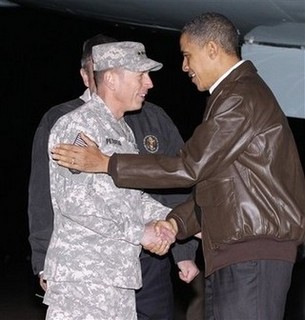Three years ago I attended a meeting outside Washington with a NATO adviser recently returned from briefings with commanders of the war in Iraq. The question had been posed to them: If there should be a targeted massacre of Christians in Iraq (the word actually used was genocide), would the U.S. military respond? The answer from the commanders: No.
It was December 2007. Gen. David Petraeus had arrived in Baghdad 10 months earlier bearing orders to carry out his new counterinsurgency strategy with a thrust of 20,000 additional troops throughout the city. Until then, U.S. forces were bogged down in Iraq's sectarian warfare—with civilian and military casualties sometimes topping 100 a day. That year U.S. casualties hit their all-time high, 904, but fell steadily after Petraeus' arrival to a low of 59 (over 11 months) in 2010. Decades from now historians will study Petraeus-style warfare launched in 2007 and how it catapulted the U.S. military from its post-Vietnam malaise.
Read Full Article »



